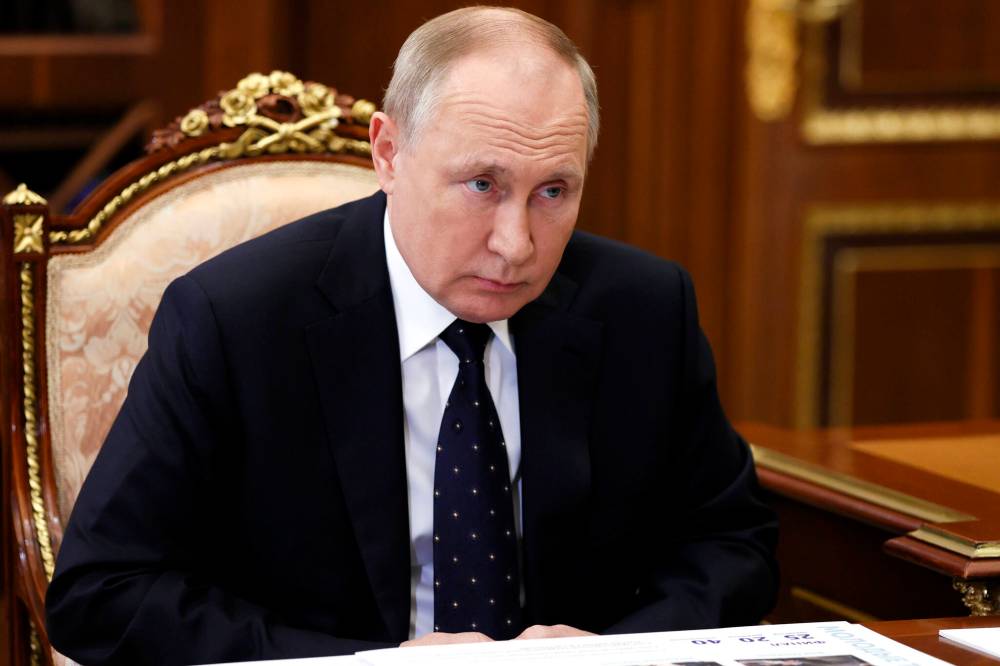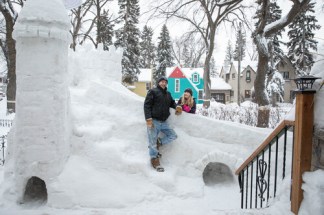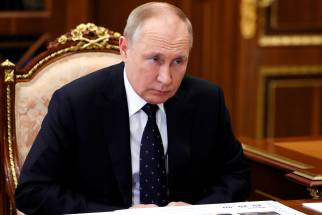Best to ignore Putin’s provocations
Read this article for free:
or
Already have an account? Log in here »
To continue reading, please subscribe:
Monthly Digital Subscription
$0 for the first 4 weeks*
- Enjoy unlimited reading on winnipegfreepress.com
- Read the E-Edition, our digital replica newspaper
- Access News Break, our award-winning app
- Play interactive puzzles
*No charge for 4 weeks then price increases to the regular rate of $19.00 plus GST every four weeks. Offer available to new and qualified returning subscribers only. Cancel any time.
Monthly Digital Subscription
$4.75/week*
- Enjoy unlimited reading on winnipegfreepress.com
- Read the E-Edition, our digital replica newspaper
- Access News Break, our award-winning app
- Play interactive puzzles
*Billed as $19 plus GST every four weeks. Cancel any time.
To continue reading, please subscribe:
Add Free Press access to your Brandon Sun subscription for only an additional
$1 for the first 4 weeks*
*Your next subscription payment will increase by $1.00 and you will be charged $16.99 plus GST for four weeks. After four weeks, your payment will increase to $23.99 plus GST every four weeks.
Read unlimited articles for free today:
or
Already have an account? Log in here »
Hey there, time traveller!
This article was published 24/01/2022 (1416 days ago), so information in it may no longer be current.
Russian President Vladimir Putin has kept Canada and other western governments in a nervous state since mid-October 2021 by moving troops and military equipment close to Ukraine, as though he meant to start a war. He and his policy makers have meanwhile complained more and more loudly about a supposed threat to Russia from the stationing of western military forces in Estonia, Latvia, Lithuania and Poland four year ago.
Since he seized Crimea by military force in 2014 after Ukrainians kicked out their pro-Russian president, and since he has been supporting pro-Russian insurgents in eastern Ukraine ever since, it is clear Mr. Putin thinks he has some freedom to throw his weight around in Ukraine. But would he actually go to war?
Cyberattacks on Ukraine on Jan. 14 and, as disclosed Monday, on Canada’s Global Affairs department seemed to warn that Russian hackers were softening up Ukraine and its allies for some kind of big push.

If Mr. Putin is preparing a ground offensive, he is taking his time about it. U.S. newspapers relying on U.S. military intelligence sources have been drawing attention since Dec. 3 to the presence of more than 75,000 Russian troops within striking distance of Ukraine. Many of these troops had been moved from distant locations in Siberia. Since then, the estimated numbers of troops have risen above 100,000.
So far, the Russian hostilities have consisted of threatening deployments, heated rhetoric, high-level diplomatic contacts and, this week, an announcement of Russian naval exercises off the coast of Ireland. Mr. Putin seems to hope that, if he barks loud enough from the bottom of the tree, he can frighten western leaders so much that Ukraine will drop into his hands.
Mr. Putin knows perfectly well that the NATO forces in Poland and the Baltic countries pose no threat to Russia. Canada’s 500 troops in Latvia, for example, part of a 1,000-strong battle group, would not stand a chance against the Russian army if they ever attacked Russia. Mr. Putin knows exactly what the Canadians are up to because Russian military observers are invited to attend their activities.
The government of Ukraine hopes to join NATO and the European Union. Something like that may eventually happen. People in eastern Ukraine and Crimea, however, look to Russia and would not welcome connection to the west. People in western Ukraine look to the west and do not wish to live under Russian domination. If Ukraine is to remain one country, it will have to live with these opposing ambitions.

Neither the logic of the case nor Mr. Putin’s manoeuvres can force the NATO countries to turn their backs on Ukraine. If Mr. Putin really wants to fight a war in order to imprison Ukraine’s people once again within a revived Russian Empire, on his head be it. The most it will get him is a country of unwilling subjects who detest him and his government and who have tasted 30 years of freedom since the Soviet Union collapsed.
The governments of Canada and its allies should calm their nerves and ignore Mr. Putin’s provocations. They should prepare for an onslaught of cyberattacks and a crescendo of barking from the dogs at the bottom of the tree. They should waste no tears on Mr. Putin’s lament that his country is misunderstood, encircled and threatened. The worst threat to Russia comes from the man who runs it.
History
Updated on Monday, January 24, 2022 10:26 PM CST: Fixes typo in headline










